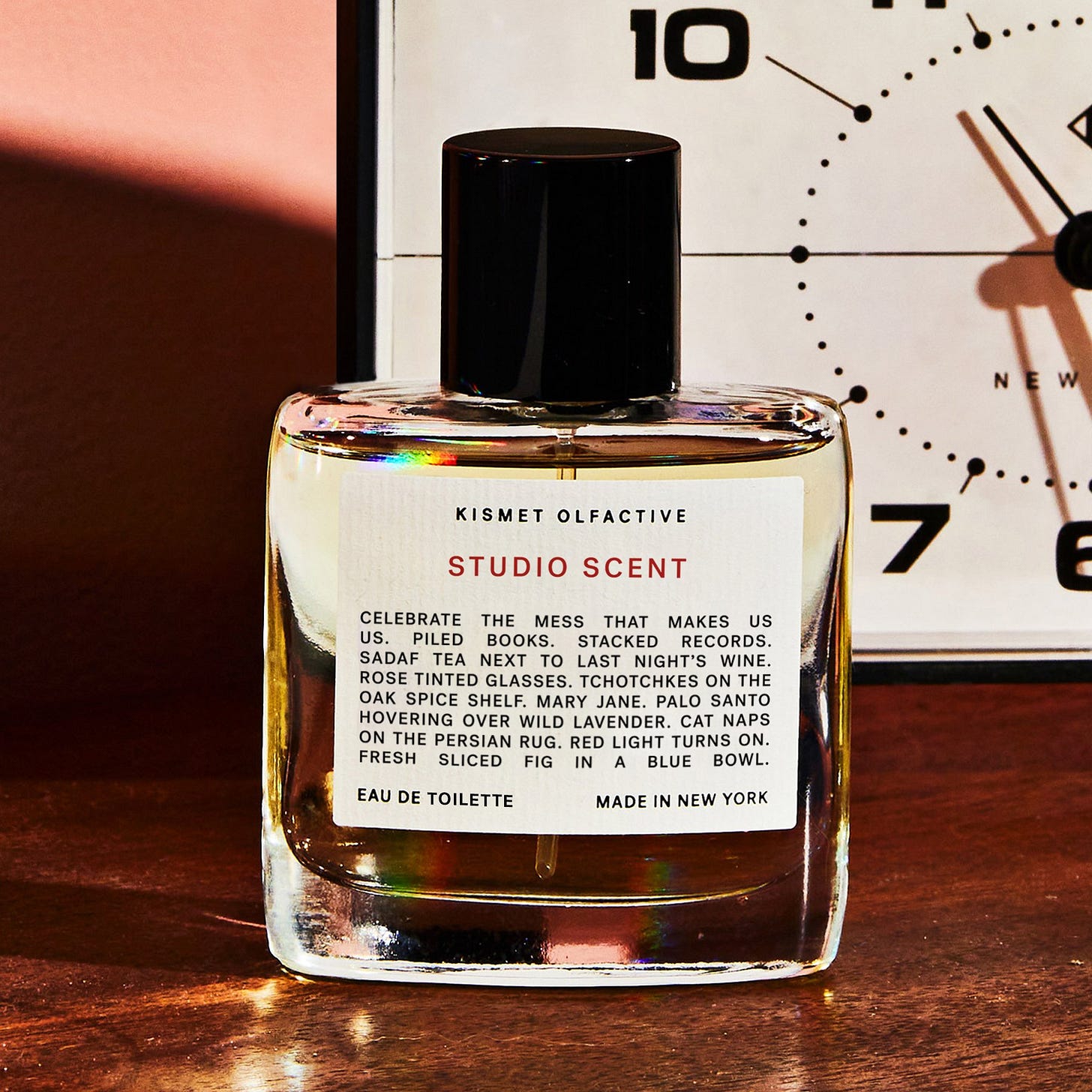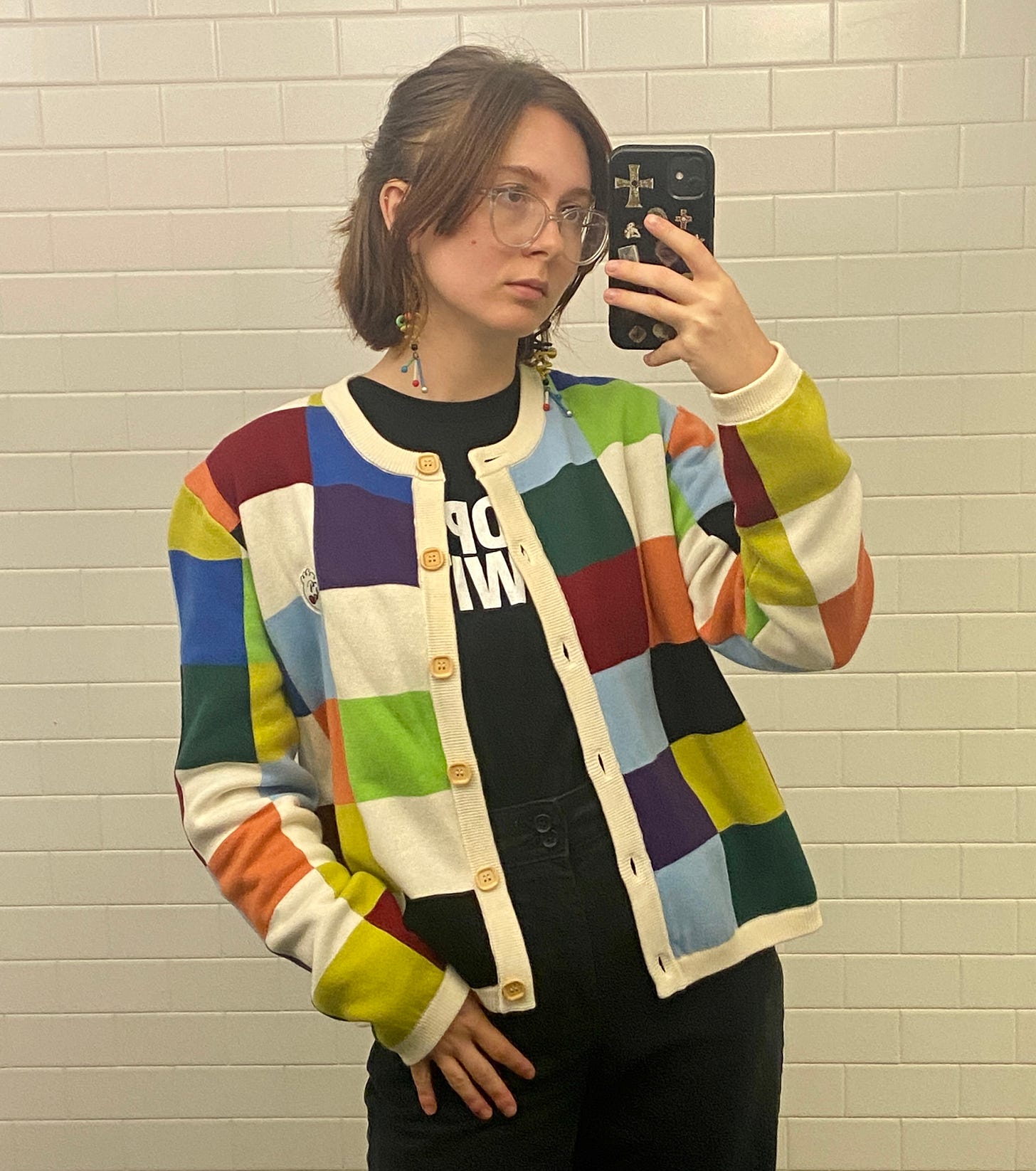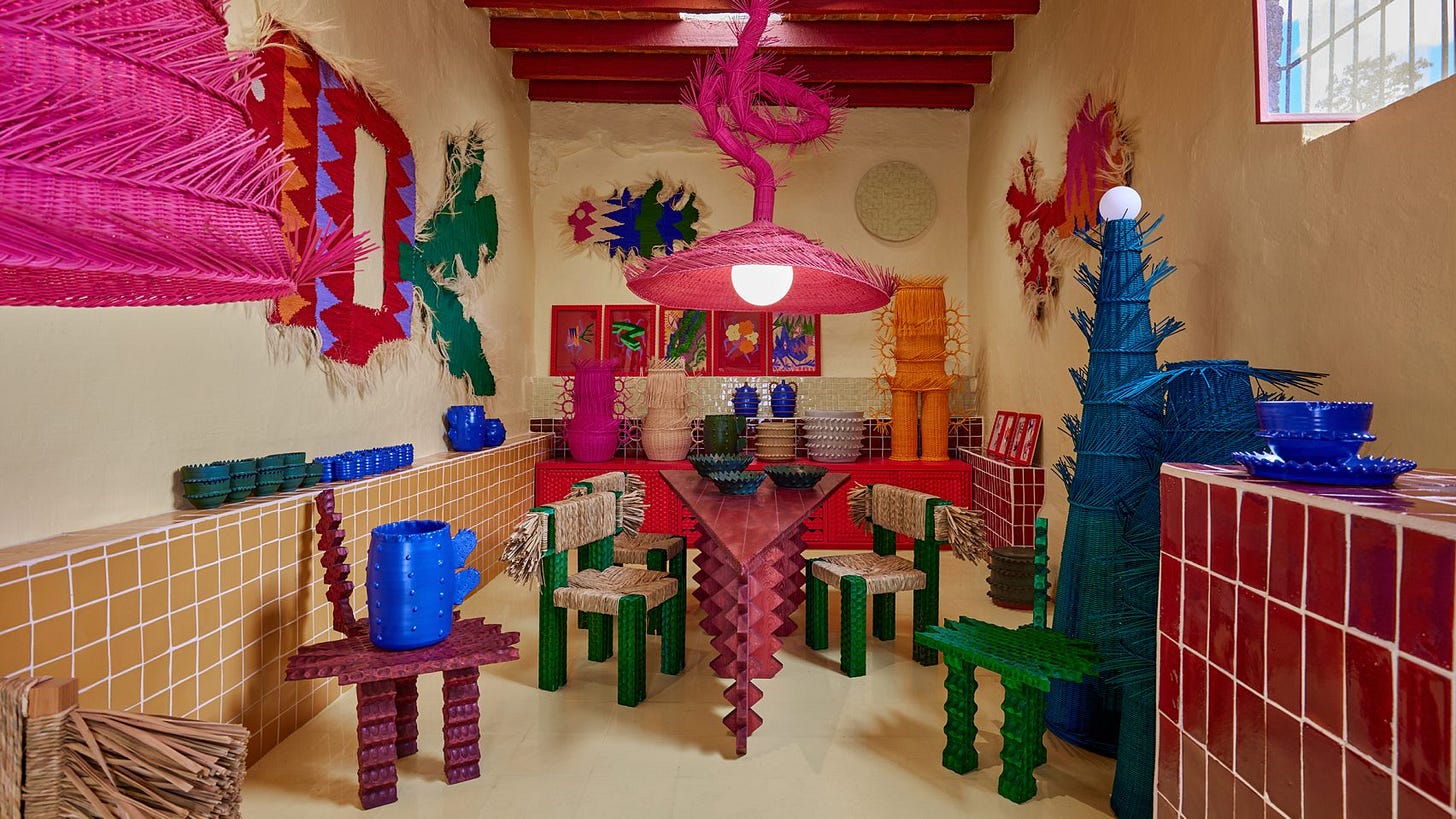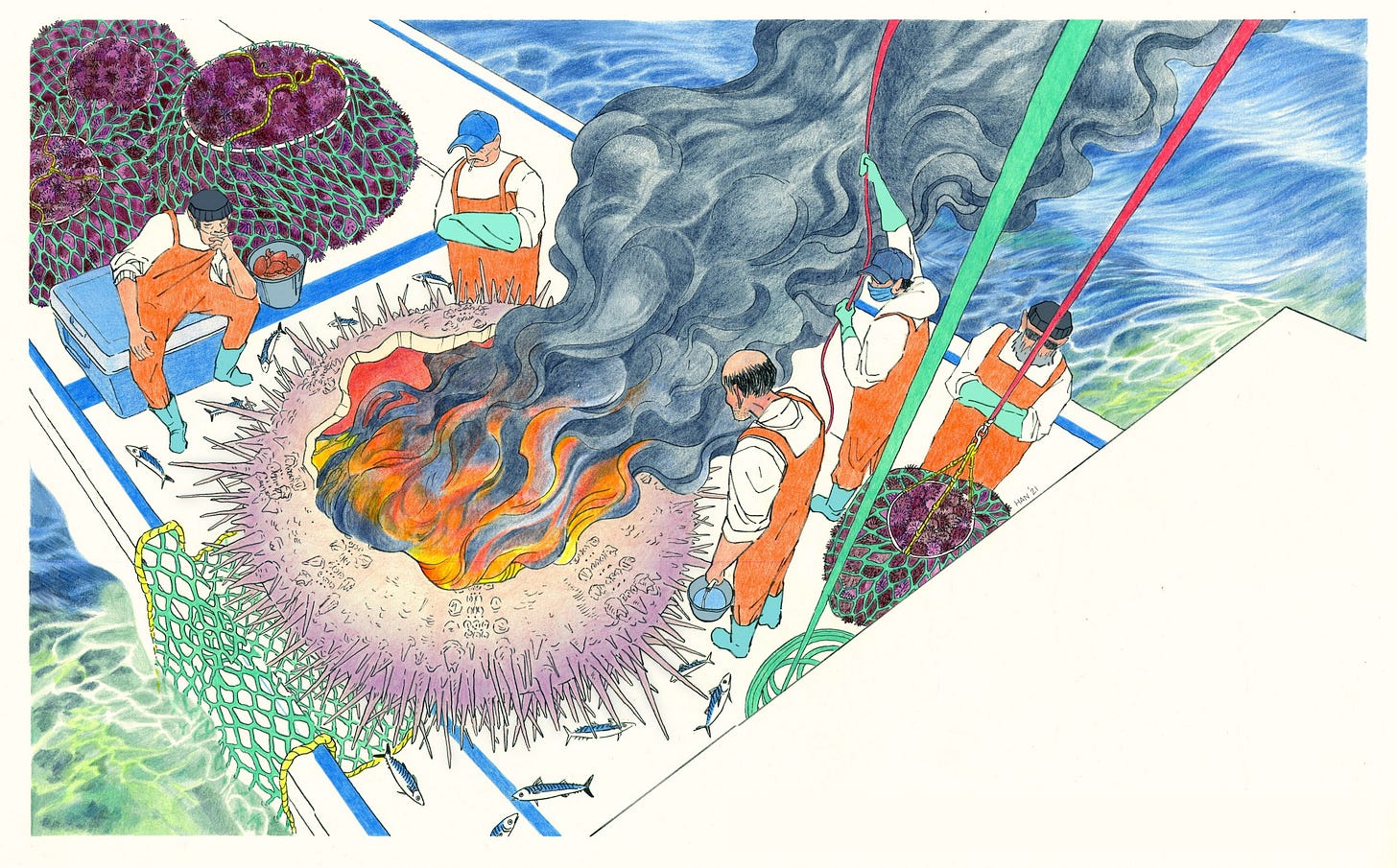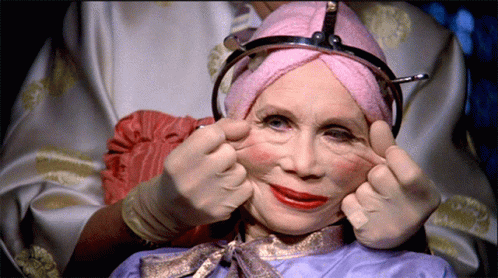57. Micro Reliquary VII
For this month’s brief newsletter, an array of things that have been keeping me informed, sane, hopeful, and in a perpetual state of wonder despite our troubles.
Hello friends,
I hope you are all taking care during these turbulent times. Care can take many forms: rest, screaming, crying, seeking the company of friends, writing, reading, watching, speaking out, listening to others. It can mean taking a step back, or feeling empowered to take a step forward. Lately, it's felt like there aren’t enough hours in the day to comprehend these magnitudes of violence and loss, much less keep up with the pace of daily stresses, errands, and deadlines.
So for this month’s brief newsletter, an array of things that have been keeping me informed, sane, hopeful, and in a perpetual state of wonder despite our troubles.
TOUCH
As the temperature slowly drops here in New York, I’ve been craving chypre perfumes and their intimate cocktail of earthy and citrusy notes. Kismet Olfactive’s Studio Scent made my jaw drop the first time I smelled it. Among the notes of tea, bergamot, lavender, and palo santo is this deep, balancing green fig that cuts through like the chill night air slipping into the intense warmth of a candle-lit apartment through an open window. The fragrance is both cozy and fresh at the same time, soft on the skin but with just enough intensity to elicit a compliment from anyone who hugs you.

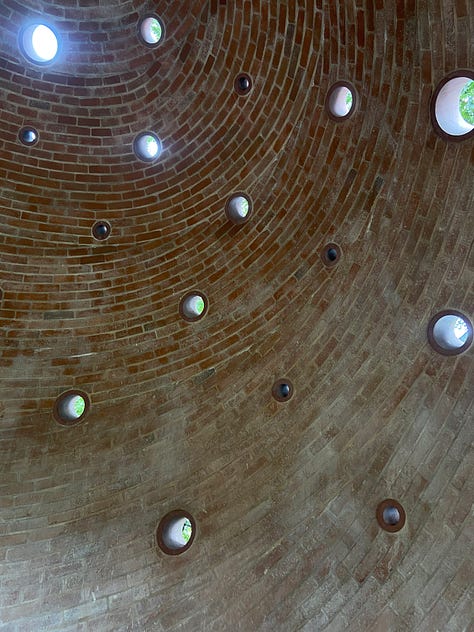

A couple of weeks ago, I went to Storm King and saw their latest commission: Lookout by Martin Puryear. Among the sculpture park’s rolling hills, winding trails, and autumnal kaleidoscope of changing leaves rose this sloping, organic form of brick. Reminiscent of the many farmhouses that dot the roads of upstate New York and broader craft traditions of chimney and dome stone masonry, the work offers visitors shelter without ever fully isolating you from the elements. Little porthole windows offer a whole other constellation of fragmented views of the landscape and sky.
With the sun going down earlier and week after week of relentless sputters of rain, I’ve been trying to find ways to combat this constant feeling of weariness with more pops of color in my wardrobe. After having it on my wish list for so long, I finally picked up the Cubis Cardigan from Kina & Tam. Playful, bright, and goes with just about everything, it’s been an adorable antidote to the seasonal blues.
Amidst the ongoing violence in Israel-Palestine, I’ve made it a point to refuse ignorance, to learn, to bear witness to history past and present, and call on others to do the same. It’s been especially terrifying to see how the American war machine has kicked into high gear despite growing calls for a ceasefire and humanitarian aid. Among the many voices and perspectives I’ve had the chance to watch and read, I found Anthony Loewenstein’s book The Palestine Laboratory to be a particularly helpful guide for contextualizing the U.S. government’s role in escalating this crisis. Lowenstein, who lived in Jerusalem and spent years reporting on the impacts of Israel’s apartheid government, takes a critical look at the country’s history of testing surveillance tech and weapons on the occupied territories of Gaza and the West Bank and their export to other governments, countries, and groups. Lowenstein’s scope is simultaneously hyper-local and global, tapping into the expertise of a number of historians, industry experts, and military analysts for this complex investigation.
LOOK
This past summer I got to intern at David Zwirner, which meant that I got to spend my week flipping through exhibition catalogs and learning about the artists on their roster. One of the coolest people I learned about was Zimbabwean painter Portia Zvavahera. Each work is its own dream-like world, layered with rich compositions of abstracted batik patterns and fantastical figures. Zvavahera’s practice explores spirituality, religious practices, and vibrant emotionality, drawing from her upbringing in both indigenous Zimbabwean and Christian beliefs to create vivid moments of wonder and healing.
Right now, I’m obsessed with the work of Mexican design studio Mestiz. Vibrant, saturated hues pair perfectly with whimsical geometric forms to create furniture that furniture and objects that celebration artisanal culture, local materials, and native ecologies. God, the things I would do to get my hands on one of their spikey plates and bowls, zoomorphic tables and chairs, or giant cactus-inspired wicker lamps. Their approach to design is an important reminder that we all need more color in our lives.
I’m struggling to put into words how looking at the illustrations of Joey Han makes me feel. Wistful, contemplative, none of them feel like enough. Han himself puts it best, describing his practice as articulations of “anticipated nostalgia,” particularly “our collective emotional associations with both natural and built environments.” His 2021 illustration Urchin (pictured above) is still on my mind. Han perfectly captures this moment of surreal ambiguity, contrasting the soft tones of the ocean water with the minor apocalypse of leaping flames and rolling smoke. I’ve also loved his dreamy Vernal Equinox zines and his dynamic take on movies like Bottle Rocket and Minari.
LISTEN
Purelink’s newest album Signs has been a grounding force for me this past month. Each track glitters with a cool, metallic haze of glitchy ambient dub oscillating between fracturing pulses of breakbeat and phantasmal wanderings of downtempo. There’s this sense of a metabolic unravelling as you listen all the way through, the intricate latticework of textural sounds letting loose like a suspended breath. Best listened to when you find yourself alone, dreamy, looking to let your thoughts drift.
You Must Remember This’s latest season, “Erotic 90s,” explores the filmmakers and actors that influenced depictions of sex on screen. Caught between the aftermath of the height of the AIDS crisis and the early foundations of teen pop stardom, this season grapples with an array of issues like the NC-17 rating and feminist sexual politics in cinema. Host Karina Longworth does Hollywood history like no one else, offering astute historical analysis and critical reflections on how these iconic films and celebrity scandals shaped our culture in the years to come. Some personal favorites include an episode about Lolita and Britney Spears, David Cronenberg’s Crash, the making of cult classic Showgirls, and the rise of “Lesbian Chic” cinema.
I’ve been keeping the recording of rrao’s Dripping set on repeat these past few weeks. A relentless mind-melt of pounding techno and slinky sci-fi synths, rrao’s deft mixing sends you tumbling through a rollercoaster of rhythms. This has been my go-to for when I need to focus, pick up the pace, and let out some pent up stress. I love that, since there was a mic on for emceeing, you also end up hearing little snippets of the audience’s joyous reactions and winded cheers, transporting you to the dance floor.
LICK
Terry Gilliam's Brazil (1985) is one of the most batshit movies I've ever seen. Set in a surreal bureaucratic dystopia where joyous painted panels hide polluted streets, plastic surgeons kill their patients, children play with guns, and everyone is at the mercy of the output of information machines, the satire pokes fun at systems of administration and the absurdity of paperwork (in the opening scene, a horrified wife has to sign for the violent arrest of her husband and gets handed a receipt). I don't want to give too much away, but the visual odes to Kafka, Orwell, and campy brutalism make for an absurd, darkly funny viewing experience.
I’m currently in a class called ‘Sensory Infrastructures’ and one of my favorite readings so far has been a multimedia essay by ethnomusicologist Jennifer C. Post. Armed with a camera and recorder, Post takes us to some of the most remote corners of rural Mongolia to discuss how environmental changes to the region are impacting local soundscapes and disrupting traditional herding. When we think of ecosystems, we think of their sights or smells, but sound can also been an important tool for knowing an environment and its nonhuman inhabitants. Post’s piece includes field recordings embedded directly into the text, encouraging you to listen as you read. By seeking to represent Mongolian herders’ relationship to the land and livestock through sound, Post reflects on how climate change and industrial pollution threaten the loss of these natural resources and auditory knowledges.
In 1970, poet and artist Marcel Broodthaers decided to interview a cat. Yes, a cat. You can listen to the original recording on e-flux. I’d also recommend reading along with the transcript to get the full experience of the cat’s impassioned conversation.
CLICK
In light of some recent losses in my life, I’ve been ruminating on Jessie Gaynor’s fantastic essay about “must-grieve TV” for Dirt. Lately it’s felt like nearly every show has grappled with mourning in some way (think: Succession, WandaVision, Yellowjackets, The Bear, Reservation Dogs, Barry, the list goes on). Gaynor contemplates consuming this kind of content, especially in the form of algorithmic content, in the wake of the loss of her mother, compounded by other kinds of collective grief around the pandemic and climate change. “If post-9/11 TV gave us the fantasy of competent leadership and superhumanly competent terrorist-busters in the form of The West Wing and 24,” Gaynor writes, “television in the trauma age is giving us digestible tragedy.” Her piece is not just a critique but an invitation for emotional complexity.
My friend Char published a piece in Public Parking about Gregg Bordowitz’s 1993 film Fast Trip, Long Drop, created in the shadow of his AIDs diagnosis and the loss of friends and family from accidents and illness. Dancing between Bordowitz’s cinematic dialogue and their musings on what it means to speak and be sick, Char wrestles with the power of the whisper and the unspoken in the construction of new linguistic paradigms around disability. Among all of the brilliant excerpts I can share from this, I’ll include my favorite: “Taking these inputs seriously pushes back at biomedicine’s impact on our communicative modes as sick people. An attunement to the whisper offers a speculative approach to the life of information…”
My friend Natalee shared the poem “Good Bones” by Maggie Smith on her Instagram story. I stopped in the midst of mindless tapping mindlessly through pictures of pets, selfies, and vlogs to read it in its entirety, then re-read it again to let Smith’s lines sink through. We live in a dark, miserable time yet Smith invites us to think about what we pass on to the next generation, how hope can carry immortal weight even if life itself does not. She writes: “I am trying / to sell them the world. Any decent realtor, / walking you through a real shithole, chirps on about good bones:”




